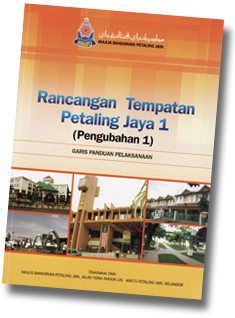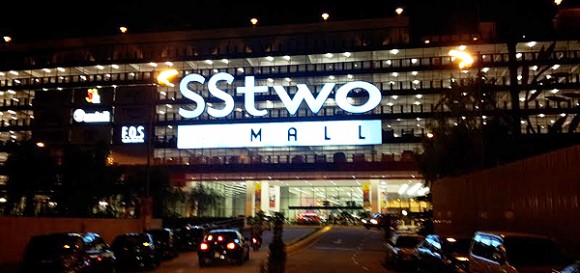
IN many instances of development approval, the MBPJ’s justification for its decision is the Petaling Jaya Local Plan 1, which is more commonly known by its Malay acronym RTPJ1. So, for example, if a land with houses is designated as commercial land under the local plan, the house owner can presumably tear down the house and proceed to build on it a high-rise commercial building instead.
The reason MBPJ believes it can approve such a conversion in land use is because of Section 18(1) of the Town and Country Planning Act. It states that “no person shall use, or permit to be used, any land or building otherwise than in conformity with the local plan”.
Notwithstanding that the PJ Local Plan 1 is an invalid document for reasons I have written about before, how has the MBPJ measured up against its own local plan, which it gazetted for use in 2003?
Apa macam pun boleh
In the case of SS2 Mall located on Jalan SS2/72, the PJ Local Plan 1 assigned most of the area covered by the mall’s land title as a commercial zone. However, the local plan also zoned a small portion of the land for housing.
In 2009, the developer of SS2 Mall argued that they be allowed to proceed with their development without building any housing since the land title had the “commercial” express condition on it. Section 108 of the National Land Code states that if there is any conflict between any by-law, or restriction imposed by any local authority or planning authority with the express condition on a land title, the express condition shall prevail. I accepted that argument even though it clearly contradicted the council’s own stand that the local plan be adhered to strictly.
Of course, the situation is reversed for the former factory lots in Section 13. The land titles in Section 13 clearly state that the land is to be used for industrial purpose only. And yet the MBPJ allowed the area to be developed into commercial buildings because the local plan zoned it as “commercial”.
Yet again at Phileo Damansara, where Informatics College is located, the local plan clearly zoned the entire area “commercial”. For a school to operate in that area, the place would have to be zoned “institutional”, yet there you have it.
So, is the local plan supreme or isn’t it? How can the council use whim and fancy to decide when to implement and when not to implement its own rule?

Above the law?
These cases demonstrate how the MBPJ does not cross-reference its own rules and the legal requirements set by both the federal and state governments. They also show that an unelected local council is far more powerful than an elected Parliament or state assembly.
As another example of how powerful local councils can be, even circulars from the National Physical Planning Council, which is chaired by the prime minister, are ignored. These circulars have very specific regulatory instructions on how to control high-density development. For example, one of the control measures the National Physical Planning Council has highlighted is the need to have two hectares of open space for every one thousand persons. PJ has almost 600,000 residents, which would require it to have 1,200ha of open space, which it does not have. No MBPJ-approved project to date has ever adhered to this rule about open space.
So, of what use is the law? For that matter, of what use is the prime minister and the state executive council in coming up with rules that the MBPJ does not care to follow?
Everything that I have highlighted – from the issuance of business licences to the approval of development projects – is a failure to implement administrative law. These laws, which are procedural in nature, ensure consistency and coherence in everything the government does. Hence, missing one step of the process can invalidate all subsequent actions.
Why is this important? Because consistent procedures safeguard against the arbitrary conduct of officers and can act as checks and balances against corruption. Administrative procedures also allow for proper auditing and investigations into an officer’s conduct.
Despite these arguments, the council’s mindset remains unchanged. Instead, many councillors spend most of their energy and time dealing with public complaints like broken drains and uncollected rubbish. The problem is, when the directors of an organisation are so busy dealing with the symptoms of a failed administrative system, how can they ensure that the organisation runs smoothly? ![]()
Former MBPJ councillor KW Mak has been critical of the MBPJ since 2006 while he was still a journalist. He marched at Bersih 3.0 and supports the cause but not the politicians who hijacked the event.


Eileen Thong says
I salute you Mr Mak for what you stand for. And I am not the only one. We need crusaders like you. Don’t let getting “axed” as a Councillor deter you from doing your bit in the interest of the community! God bless you.
Alwin Lim says
That is the reason why the serenity of Petaling Jaya in the 80s was disturbed. I had friends who told me that Petaling Jaya was one of the best places he has ever been to. Today it is congested, dirty, and condos everywhere springing up.
Now the integrity of MBPJ is highly questionable as [former] councillor Mak put it in a way that even the prime minister has no control over decisions made by councillors. Unfortunately for Petaling Jaya residents, not all councillors have an eye for justice or are as fanatical as Mak. (Not to degrade Mr Mak but in the society we live in, Mak is really an endangered species that lives inside the jungle of Bukit Gasing that is waiting to be dug out for yet another condominium project).
I have a question, if any building that is built against the law at the time of construction (Section 108 or whatever section), can it be torn down if requested by the owners?
KW Mak says
@Alwin Lim
Under the Town and Country Planning Act and the National Land Code, any building that was built without adhering to the rules can be torn down.
Of course, whether the government of the day would care to give such an order is another matter entirely.
Regards.